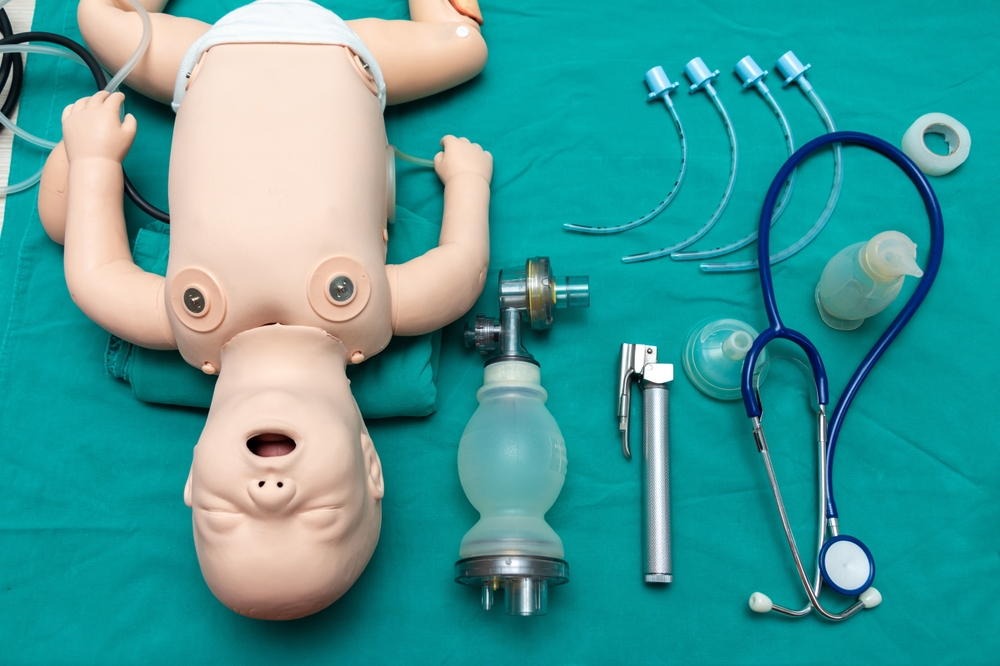In critical situations where a child's life is at stake, every moment is crucial. Pediatric Advanced Life Support (PALS) is the gold standard for healthcare providers responding to life-threatening emergencies in children. This systematic approach to pediatric resuscitation has transformed emergency care, equipping medical professionals with the skills to act swiftly and decisively.
PALS provides a structured framework for assessing and treating critically ill or injured children. At its core is the primary assessment - a quick, organized evaluation designed to identify immediate life threats within 60 seconds. This crucial first step can mean the difference between life and death in pediatric emergencies.
The power of PALS lies in its:
Your mastery of PALS primary assessment and pediatric CPR techniques creates a foundation for confident, effective emergency response. This knowledge empowers you to make split-second decisions that can save a child's life - from recognizing early warning signs to delivering precise, age-appropriate interventions.
In such emergencies, understanding the adult chain of survival can also provide valuable insights, especially when dealing with cases where adult care protocols might be applicable. The integration of Artificial Intelligence in healthcare is another frontier that is enhancing our ability to respond effectively. For instance, AI is transforming emergency cardiac care, improving diagnosis, treatment precision, and patient outcomes through advanced data analysis and real-time decision support.
Lastly, mastering these skills often involves rigorous practice and assessment. Engaging with quizzes related to these topics can significantly enhance your learning experience.
PALS certification, offered by the American Heart Association (AHA), equips healthcare providers with essential skills for managing pediatric emergencies. This certification is crucial for professionals working in:
Healthcare professionals required to maintain PALS certification:
The AHA PALS certification course combines hands-on practice with cognitive learning. You'll master:
Additionally, it's important to recognize the role of child safety at home and how to respond to common household hazards and emergencies.
Finding a Reputable PALS Course
AHA-approved training centers offer both in-person and online PALS certification options. To locate an authorized provider:
When choosing an online PALS course, verify:
It's also beneficial to consider integrating some BLS certification knowledge into your training, as it can complement your PALS skills.
PALS certification remains valid for two years. Many healthcare facilities require renewal before expiration to maintain employment eligibility. The renewal process includes updates on current guidelines and hands-on practice with pediatric emergency scenarios.
The course typically spans 12-14 hours, incorporating both didactic learning and simulation-based training. You'll receive a provider manual, access to online resources, and practice materials to prepare for the certification exam.
In the context of ongoing education, staying updated with [guideline changes](https://affordableacls.com/lessons/5-guideline-changes) is essential for maintaining the relevance of your skills in emergency situations.

The ABCDE approach is a fundamental method used in pediatric emergency assessment. It provides healthcare providers with a structured way to quickly and effectively identify life-threatening conditions.
In situations where the patient is unconscious but still breathing and has a pulse, it's important to assist them into the recovery position. This helps protect their airway and reduces the risk of aspiration.
Each step in the ABCDE approach requires a quick but thorough evaluation. You'll need to complete this primary assessment within 60 seconds while also addressing any life threats you discover along the way.
Critical Signs to Watch For:
The ABCDE approach helps you prioritize interventions based on severity. If you find a life-threatening condition at any step, start treatment immediately while continuing your assessment. This systematic method ensures that no important elements are overlooked during your evaluation.
Healthcare providers must be flexible in their assessment approach. In some cases, such as when there is severe bleeding present, you may need to address circulation (C) before breathing (B). Your clinical judgment, combined with the ABCDE framework, will guide these decisions.
Regular practice of the ABCDE approach improves speed and accuracy. Simulation training helps healthcare providers maintain these vital assessment skills and prepare for real emergency situations. To further enhance your understanding and application of this approach, consider taking part in relevant quizzes that test your knowledge and readiness for such critical assessments.
The exposure phase of PALS primary assessment requires strategic decision-making between focused and complete examinations. Your choice depends on two critical factors: patient responsiveness and presenting complaints.
Time Management Tips:
Remember to protect patient dignity during exposure by:
Your examination findings guide immediate interventions and help determine the next steps in pediatric resuscitation efforts. Quick identification of life-threatening conditions allows for prompt treatment initiation while maintaining the systematic assessment approach.
Children are particularly vulnerable to temperature changes during medical assessments. Their higher surface area-to-body mass ratio and limited thermoregulatory capabilities put them at increased risk for hypothermia during exposure examinations.
Healthcare providers must balance the need for thorough examination with maintaining appropriate body temperature. Quick, systematic exposure assessments combined with immediate warming measures help prevent complications while ensuring comprehensive patient care. To facilitate this, it's crucial to implement active temperature monitoring strategies, which include checking core temperature every 15 minutes, monitoring extremity temperature, assessing skin color and capillary refill, and documenting temperature trends.
When dealing with trauma patients, extra warming measures are required. Burn victims need specialized temperature management, septic children may present with temperature instability, and newborns require additional thermal protection.
Swift identification of life-threatening conditions can mean the difference between life and death in pediatric emergencies. Your primary assessment needs to focus on these critical signs:
Your assessment should include rapid evaluation of vital signs, noting any significant deviations from age-appropriate norms. Children can compensate well during early stages of shock, maintaining normal blood pressure until sudden decompensation occurs. Watch for subtle changes in mental status or behavior as early warning signs.
Document any bruising patterns, burns, or injuries that might indicate trauma or abuse. These findings can guide your immediate interventions and help determine the appropriate treatment algorithm to follow.
In addition to the above conditions, it's crucial to be aware of potential cardiac issues such as a heart attack, even in pediatric patients. Characterized by symptoms like chest tightness, nausea, sweating, shortness of breath, fatigue, pain in the arm or jaw, and pallor, recognizing these signs early can be lifesaving. Always remember to call 911 in such situations and be prepared to start CPR if necessary.

The ACLS and PALS algorithms share fundamental principles but differ significantly in their approach to pediatric patients. The PALS algorithm incorporates specific modifications tailored to children's unique physiological needs and responses.
The exposure findings from your primary assessment directly influence your pathway through the PALS algorithm. These findings help determine whether to pursue:
Your exposure findings create a feedback loop within the algorithm, constantly informing and adjusting your interventions. This dynamic process allows for real-time modifications to:
The AHA ACLS and PALS protocols emphasize the importance of continuous reassessment. Each new finding from exposure can trigger a shift in your algorithm pathway, ensuring your interventions remain aligned with the patient's changing condition.
In cases where pediatric patients are involved, it's crucial to follow the Pediatric Basic Life Support Algorithm, which serves as the foundational pathway for pediatric BLS when two or more rescuers are present.
Pediatric CPR requires specific techniques that differ from adult resuscitation. The PALS guidelines establish clear protocols for delivering effective chest compressions and rescue breaths to children:
It's crucial to reassess the patient frequently and adjust your technique based on the child's age, size, and response to interventions. For more specific information on post-resuscitation management, including transfer to tertiary care, you can refer to our detailed guide. Additionally, our lesson reviews provide further insights into various aspects of pediatric CPR.
Locating high-quality ACLS and PALS certification courses requires careful consideration of several factors. Here's what you need to know about finding the right training program:
Look for training programs in your area that are affiliated with reputable organizations. These may include:
If you prefer the flexibility of online learning, explore various digital platforms that offer ACLS and PALS courses. Consider the following options:
When evaluating potential training programs, look for these essential features that indicate their credibility and effectiveness:
To ensure you're selecting a high-quality course, consider the following factors:
In addition to the quality of the course itself, take into account these practical aspects that may impact your ability to complete the training:
For instance, if you're looking to master the Adult Tachycardia with a Pulse Algorithm, Affordable ACLS offers specialized courses in this area.
To find approved courses in your area, contact your local healthcare facilities or search the AHA's official training center directory. Many programs offer flexible scheduling options, including evening and weekend classes to accommodate working professionals.
Mastering PALS Primary Assessment requires dedication to continuous learning and practical application. Your commitment to staying current with pediatric emergency care protocols directly impacts young lives in critical situations.
Regular PALS certification renewal keeps your skills sharp and introduces you to the latest evidence-based practices. The ABCDE approach - Airway, Breathing, Circulation, Disability, and Exposure - serves as your foundation for quick, systematic assessment in pediatric emergencies.
Consider these key actions to maintain your expertise:
Your proficiency in PALS protocols, combined with hands-on experience, creates a powerful skillset for pediatric emergency response. Each certification course strengthens your ability to make split-second decisions and deliver life-saving care when children need it most.
Remember: Every moment spent improving your PALS knowledge translates to increased confidence and competence during real emergencies. Your dedication to mastering these skills helps ensure the best possible outcomes for your pediatric patients.
.jpg)

